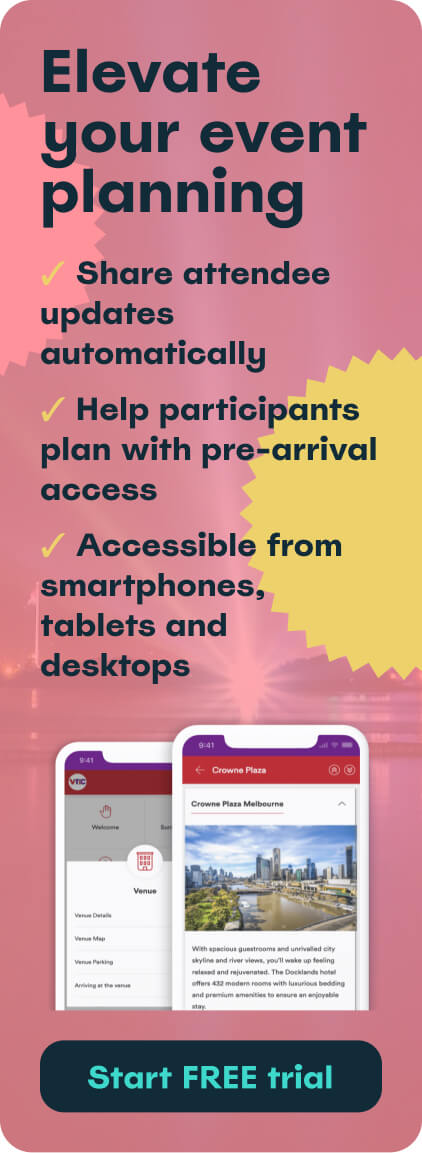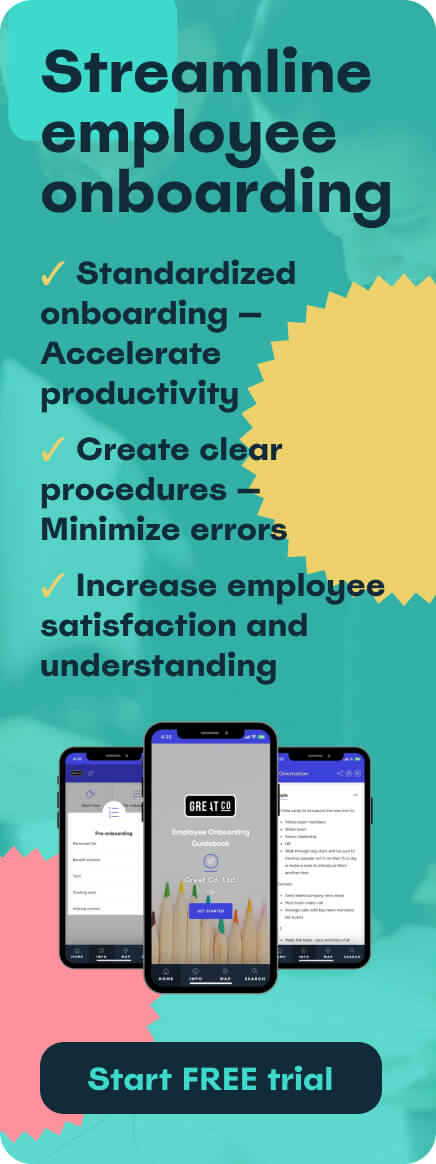Client onboarding is the critical phase that sets the stage for a successful, long-term working relationship. It’s where you turn a newly signed contract into a productive partnership. Get it right and you secure client happiness, reduce churnand free up your team to focus on the work itself. Get it wrong and you risk early friction, poor communication and a frustrating experience for all involved.
A structured and repeatable client onboarding checklist is not just helpful, it’s essential for scaling your business and maintaining a consistently high standard of service. It ensures no crucial step is missed, from the initial welcome to setting clear expectations and integrating your teams.
In this complete guide, we’ll explore:
- What is client onboarding?
- Why is client onboarding important?
- 10-step client onboarding checklist
- Frequently asked questions
Take the first step to simplifying your client onboarding.
What is client onboarding?
Client onboarding is the process of integrating a new customer or client into your company's processes and systems after they have signed a contract or made a purchase. It’s the bridge between the sales phase and the service delivery or product usage phase.
This vital process typically involves a series of steps, including:
- Introductions between key stakeholders on both sides.
- Administrative and legal setup (contracts, billing, access).
- Discovery and goal-setting sessions.
- Establishing clear lines of communication and project management tools.
- Providing the client with the necessary information to get started.
The primary goal of a well-executed client onboarding process is to make the client feel valued, confident in their decision and fully prepared to achieve success with your company, leading to faster value realisation and a higher client lifetime value (CLV). For businesses that handle the onboarding of multiple clients, an organised client onboarding document is indispensable for maintaining consistency and efficiency.
💡 Pro tip: check out our guide: what is digital onboarding and how does it work?
Why is client onboarding important?
The significance of a streamlined and comprehensive client onboarding process cannot be overstated. It directly impacts your bottom line and your company's reputation.
- Drives Client Success and Retention: The initial experience dictates the long-term relationship. A clear, well-organised onboarding process ensures the client knows how to use your product or service effectively from day one, leading to faster results, higher satisfaction and reduced churn. This initial positive momentum is the foundation of client success.
- Reduces Support Load and Questions: A comprehensive onboarding system, especially one that uses a digital guidebook, pre-emptively answers common questions. This not only empowers the client but dramatically reduces the number of repetitive enquiries directed at your support or account management teams, saving countless hours.
- Enhances Client Confidence: A professional, structured process signals competence and reliability. It reassures the client that they made the right choice and builds immediate trust in your ability to deliver on your promises.
- Improves Internal Efficiency: A standardised client onboarding checklist template ensures that every team member follows the same best practices. This consistency eliminates guesswork, speeds up the internal workflow and makes the process easily scalable as your company grows.
- Accelerates Value Realisation: The quicker a client can move past the administrative hurdles and start achieving their goals, the faster they will see the return on their investment (ROI). Effective onboarding is the accelerator for this value realisation.
💡 Pro tip: discover exactly what makes a good onboarding experience.
10-step client onboarding checklist
This onboarding client checklist provides the framework for a consistent, professional and efficient process that works across various industries, from agencies and consultants to SaaS companies.
1. Welcoming message
The very first step is to formally welcome the client and transition them from the sales team to the operations/account management team. This is a moment to reiterate your excitement and provide the client with all the essential 'who, what and how' information they need, reducing initial anxiety. Forget sending an overwhelming stream of emails, PDFs, or scattered documents. Centralise all your welcoming information, team introductions, next steps, FAQs, contact details and links to your systems, in a beautifully simple and accessible digital guidebook. Touch Stay allows you to create a branded, easy-to-navigate client hub that is accessible on any device. This simple, one-time investment saves you hours of repetitive explanation and provides a superior, professional client experience from the outset.
Forget sending an overwhelming stream of emails, PDFs, or scattered documents. Centralise all your welcoming information, team introductions, next steps, FAQs, contact details and links to your systems, in a beautifully simple and accessible digital guidebook. Touch Stay allows you to create a branded, easy-to-navigate client hub that is accessible on any device. This simple, one-time investment saves you hours of repetitive explanation and provides a superior, professional client experience from the outset.
Start delivering exceptional, low-friction onboarding today
2. Legal and compliance actions
Ensure all necessary contractual and regulatory paperwork is finalised before any significant work begins. This protects both parties and ensures compliance.
- Final contract review and digital signature.
- Non-Disclosure Agreements (NDAs) signed, if required.
- Data Protection/GDPR compliance confirmation.
- Confirmation of intellectual property (IP) assignment, if applicable.
- Creation of client files and secure document storage setup.
3. Financial administration
Clarity on billing is crucial to avoid friction down the line. Make sure the client fully understands the payment terms and that all necessary accounts are set up.
- Confirming the invoicing schedule and payment terms (eg. net 30, upfront, or staged payments).
- Setting up the client in your accounting software.
- Collecting necessary tax documentation (e.g., VAT number).
- Confirming the client’s preferred contact for all financial matters.
4. Mapping out the scope, goals and resources
This is the most crucial strategic phase. You need to transition the high-level promises of the sales team into tangible, measurable objectives for the project team.
- Kick-off Meeting: Schedule a mandatory kick-off meeting to introduce the full project team and confirm the scope of work (SOW).
- Goal Confirmation: Document and sign off on the specific Key Performance Indicators (KPIs) or outcomes the client expects to achieve.
- Resource Audit: Identify and gain access to any client resources needed, such as existing data, branding guidelines, or system logins.
- Success Definition: Clearly define what ‘success’ looks like at the end of the project/initial term.
5. Set up project management
A successful project requires a single source of truth for tasks, documents and progress.
- Project Workspace Creation: Create the client's dedicated space in your project management tool (e.g., Asana, Trello, ClickUp).
- Access Provision: Provide the client team with logins and a quick-start guide for the tool.
- Document Repository: Set up the shared folder structure for all project deliverables and documentation (eg., Google Drive, SharePoint).
- Initial Task Population: Input the first key milestones and tasks from the SOW.
6. Communication with stakeholders
Ambiguity in communication is a leading cause of client frustration. Establish the rules of engagement immediately.
- Key Contact Assignment: Confirm the main point of contact on both sides for different functions (project, billing, technical).
- Communication Channels: Define the primary channels for day-to-day communication (e.g., Slack, email, platform chat) and emergency contact.
- Meeting Cadence: Agree on the schedule for recurring status meetings (e.g., weekly check-ins, monthly reporting) and who needs to attend.
- Response Time SLAs: Set clear expectations for how quickly messages and requests will be addressed.
7. Value realisation
This is where you give the client the keys to the kingdom. Ensure they know how to take the first steps to see results quickly.
- Initial Training: Conduct the first round of training on your product or service's core features.
- First Task Assignment: Give the client a small, high-impact task they can complete to experience a quick win.
- Launch Readiness: If relevant, confirm all technical setup or integration steps are complete and verified.
- Usage Monitoring: Set up tracking to monitor the client's early engagement with your product or the project resources.
8. Preparing your team
Onboarding isn't just about the client; it’s about ensuring your team is fully prepared to deliver.
- Client Handover Meeting: The sales/onboarding team formally briefs the delivery team (project managers, account managers, engineers) on the client's background, goals, risks and personality.
- Resource Allocation: Ensure all necessary personnel and resources (e.g., specific software licences, budget) are assigned.
- Internal Kick-off: Hold an internal meeting to review the SOW, assign initial tasks and confirm internal deadlines.
9. Project tracking
Once the onboarding phase is complete and the project is running, you need a system to ensure it stays on track.
- Progress Reporting: Establish the format and frequency of reports on KPIs and project milestones.
- Risk Identification: Assign a specific team member to track potential project risks and bottlenecks.
- Feedback Loop: Set up a process for regularly soliciting and acting on client feedback (e.g., short surveys, scheduled check-ins).
10. Reviewing and improving the process
The final stage of the overall onboarding process is internal: how can you make the next one better?
- Post-Onboarding Survey: Send a brief survey to the client 30 days after the formal onboarding period ends to gauge their satisfaction.
- Internal Retrospective: Hold a meeting with the sales, onboarding and delivery teams to discuss what went well and what needs improvement.
- Update the client onboarding checklist template: Incorporate lessons learned into your master document to ensure continuous improvement and scalability.
Frequently asked questions
This section addresses common queries that clients and service providers have about the new client onboarding checklist template and process.
While a structured checklist mitigates many issues, common pitfalls include:
- Unclear Scope: Allowing the client to move the goalposts or failing to confirm the scope of work and success metrics upfront.
- Communication Bottlenecks: Lack of clarity on who to contact for what, leading to delays and frustration.
- Data Overload: Bombarding the client with too many documents and links at once, causing overwhelm.
- Lack of Internal Handover: Sales teams failing to transfer critical client knowledge to the delivery teams, leading to the client having to repeat information.
- Slow Time to Value: A lengthy or complex process that delays the client from seeing their first tangible result.
The key to a smoother, faster onboarding process is centralisation and clarity. You should aim to reduce friction and eliminate repetitive tasks.
- Automate Admin: Use e-signature software, automated invoicing and integrated CRM systems.
- Standardise Documentation: Build a repeatable client onboarding document that can be easily customised for each client.
- Use a Touch Stay digital guidebook: Instead of relying on email, which is inherently fragmented, you can create a single, elegant digital resource that holds all the key information: team bios, communication protocols, FAQs, system links and project resources.
This not only makes information instantly accessible but also eliminates the need for your team to answer the same questions repeatedly. The client gets a better experience and your team saves significant time.
A comprehensive client onboarding checklist should cover the four main pillars of a relationship:
- Administrative: Contracts, billing and access.
- Strategic: Goal-setting, scope confirmation and success definition.
- Logistical: Communication rules, project management setup and resource sharing.
- Relational: Team introductions, welcome message and feedback collection.
You onboard new clients by executing the steps in a structured onboarding client checklist, ensuring consistency from one client to the next. The overall process should follow these five stages:
- The Welcome: Send a warm, professional welcome and provide the client with a single source of truth for all initial information (e.g., a digital guidebook).
- The Setup: Complete all legal, financial and access-related administrative tasks.
- The Strategy: Host a kick-off meeting to confirm the scope of work and clearly define project goals and KPIs.
- The Execution: Integrate the client into your project management systems and begin initial training or service delivery.
- The Review: Monitor early progress and solicit feedback to ensure satisfaction and inform future process improvements.
Ready to transform your client onboarding from a liability to a competitive advantage?

Ned
Ned has clocked up over 11 years in digital marketing and comms, with a strong focus on creating engaging content for a range of brands and agencies. When he’s not writing, he can be found digging for records, peering through his telescope at the night sky, or onboard his local lifeboat where he volunteers as a crewmember.
Be the first to know!
Join our newsletter for early access to:
- ✅ Free guides
- ✅ Pro tips & tricks
- ✅ Time saving tutorials
- ✅ Latest blog posts
- ✅ Checklists & templates














